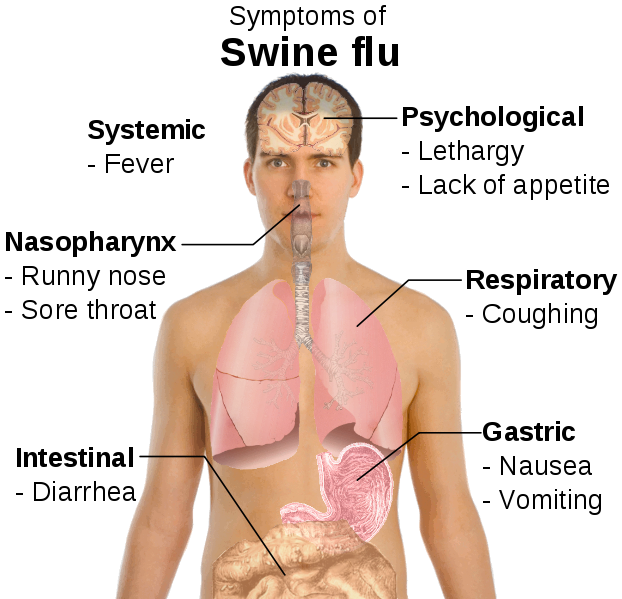Swine Flu
SWINE FLU
A human respiratory infection caused by an influenza strain that started in pigs.
Swine flu was first recognized in the 1919 pandemic and still circulates as a seasonal flu virus. Swine flu is caused by the H1N1 virus strain, which started in pigs.
Symptoms include fever, cough, sore throat, chills, weakness, and body aches. Children, pregnant women, and the elderly are at risk from severe infection.
Typical treatment includes rest, pain relievers, and fluids. In some cases, antiviral medication and IV fluids may be required.

Risk factors for swine flu
When it first emerged, swine flu was most common in children 5 years and older and young adults. This was unusual because most flu virus infections are a higher risk for complications in older adults or the very young. Today, risk factors for getting swine flu are the same as for any other strain of the flu. You’re most at risk if you spend time in an area with a large number of people who are infected with swine flu.
Some people are at higher risk of becoming seriously ill if they’re infected with swine flu. These groups include:
- Adults over age 65
- Children under 5 years old
- Young adults and children under age 19 who are receiving long-term aspirin (Bufferin) therapy
- People with compromised immune systems (due to a disease such as AIDS)
- Pregnant women
- People with chronic illnesses such as asthma, heart disease, diabetes mellitus, or neuromuscular disease
Preventing swine flu
The best way to prevent swine flu is to get a yearly flu vaccination. Other easy ways to prevent swine flu include:
- Frequently washing hands with soap or hand sanitizer
- Not touching your nose, mouth, or eyes (The virus can survive on surfaces like telephones and tabletops.)
- Staying home from work or school if you’re ill
- Avoiding large gatherings when swine flu is in season
